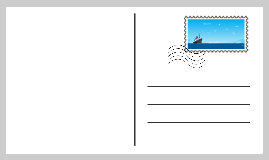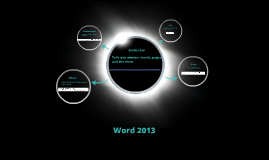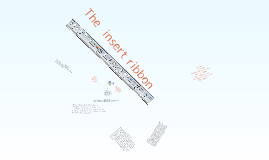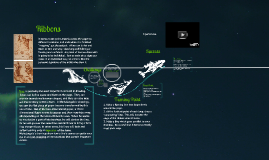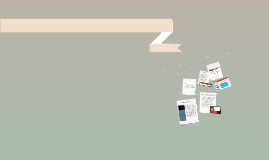ribbon
Transcript: The insert ribbon Header the thing that tells you your name and date 2.Clip art Building blocks are reusable pieces of content or other document parts that are stored in galleries. You can access and reuse the building blocks at any time. You can also save building blocks and distribute them with templates so that other users can use the building blocks you created Quick parts If you insert a Microsoft Windows Metafile (.wmf (Windows Metafile Format (WMF): A vector graphics format for Windows-compatible computers used mostly as a clip art format in word-processing documents.) file) from the Clip Organizer, you can convert it into a drawing object (drawing object: Any graphic you draw or insert, which can be changed and enhanced. Drawing objects include AutoShapes, curves, lines, and WordArt.). If the picture is a bitmap (bitmap: A picture made from a series of small dots, much like a piece of graph paper with certain squares filled in to form shapes and lines. When stored as files, bitmaps usually have the extension .bmp.), .jpg, .gif, or .png file, it can't be converted into drawing objects and ungrouped. cross- reference made from one part of a book or register to another part, where the same or an allied subject is treated o hyperlink In computing, a hyperlink (or link) is a reference to a document that the reader can directly follow, or that is followed automatically.[citation needed] A hyperlink points to a whole document or to a specific element within a document. Hypertext is text with hyperlinks, and is commonly viewed with a computer. A software system for viewing and creating hypertext is a hypertext system, and to create a hyperlink is to hyperlink (or simply to link). A user following hyperlinks is said to navigate or browse the hypertext. The objects laid out on this article of used mostley for comparing shapes Word art The Drawing toolbar available in earlier versions of Microsoft Office programs has been replaced by the Drawing Tools ribbon tab. The ribbon is designed to help you quickly find the commands that you need to complete a task. chart A map showing coastlines, water depths, or other information of use to navigators bookmark To add a table of contents for an individual section, you create a bookmark for that section and specify that bookmark in the TOC field code. table the system of numbering pages Picture 1. A visual representation or image painted, drawn, photographed, or otherwise rendered on a flat surface smart art Ready-made pieces of printed or computerized graphic art, such as illustrations, borders, and backgrounds, that can be electronically copied and used to decorate a document. page number SmartArt graphic is a visual representation of your information that you can quickly and easily create, choosing from among many different layouts, to effectively communicate your message or ideas






